|
September 18, 2011
|
Southeastern, New Hampshire
|
There are approximately 66 different Asters in the Northeastern United States.
Fortunately, there are only four (4) Asters that meet the following two criteria:
- Have leaves with petioles (leaf stems)
- Inflorescence (cluster of flowers) is commonly flat- or round-topped with
few firm and wide leafy bracts (reduced leaf structure at base of flower).
The following Asters meet this criteria:
- Forked Aster (Midwestern White Heart-Leaved Aster) (Eurybia furcata):
This Aster does not grow East of Michigan.
- White Wood Aster (Common White Heart-Leaved Aster) (Eurybia divaricata):
The flower has 5-10 rays. These flowers had mostly 12 rays. The leaves of White Wood Aster
are Long-Acuminate (they taper to a relatively long point). The leaves of this plant are
Short-Acuminate (they taper to a fairly short point).
- Big-Leaved Aster (Eurybia macrophylla): The flower has
9-20 rays. The leaves of Big-Leaved Aster are Obtuse (Blunt rounded) or Short-Acuminate
(they taper to a relatively short point). Flowers tinged with lilac or purple.
- Schreber’s Aster (Eurybia schreberi): This plant. Similar leaves
to Big-Leaved Aster above except that the basal leaves tend to have a rectangular sinus
(at the base of the leaf). Flower rays are 6-14 per flower (though I have seen
some references listing as many as 20 rays). The involucre (whorl of
bracts below the flower) is much thinner than for Big-Leaved Aster.
This plant had some flowers that had as many as 16 rays. The bracts seems to be fairly
wide. Based on these two facts, Big-Leaved Aster would be a good fit. However, Big-Leaved
Aster flowers tend to be tinted purple or lilac. These flowers are white. In addition,
the involucre is 6 to 7 mm long and Big-Leaved Aster involucres are at least 7 mm long.
The sinus of the basal leaves was often rectangular as seen for Schreber’s Aster.
This plant is puberulent (fine, short hairs) on the peduncle (flower stalk) and not
does not appear to have glands on the peduncle. Big-Leaved Aster is glandular and
Schreber’s Aster is not glandular. Scheber’s Aster may be a hybrid
of Big-Leaved Aster and White Wood Aster, so some similarities of each are expected.
|
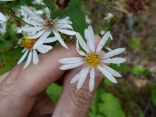
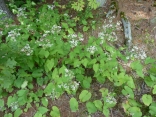
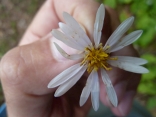
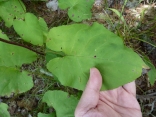
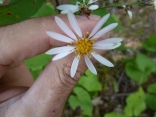
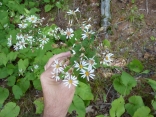
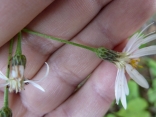
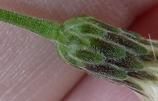
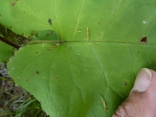
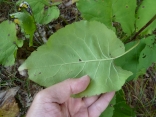
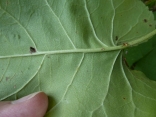
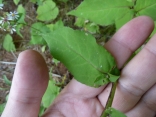
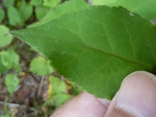
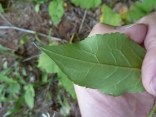
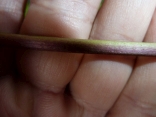
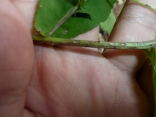
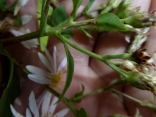
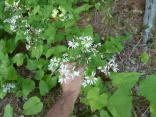
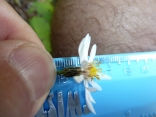
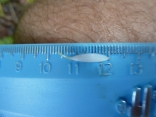
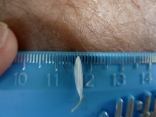
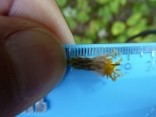
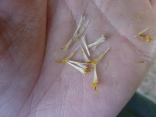
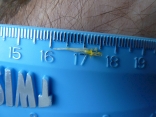
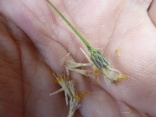

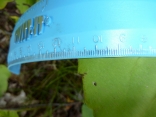
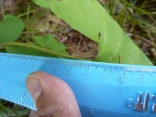
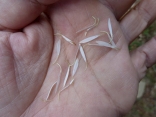
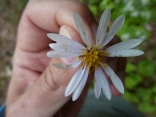
|





























